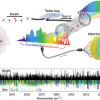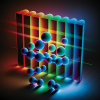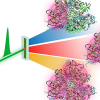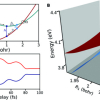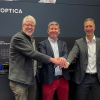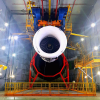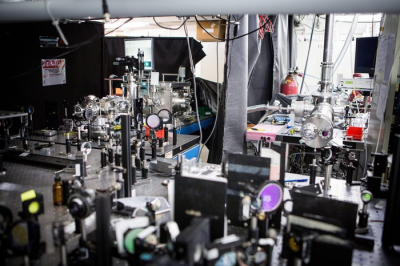
An international research team, led by Professors Tsuneyuki Ozaki and François Légaré at the Institut national de la recherche scientifique (INRS), has developed a unique method to enhance the power of a laser source emitting extreme ultraviolet light pulses. The underlying mechanism of the newly observed phenomenon involves the unique role of dark-autoionising states through coupling with other pertinent electronic states. Thanks to this work, the team will be able to study the ultrafast dynamics of a single dark autoionising state at the femtosecond timescale, which was previously impossible due to its inability to undergo single-photon emission or absorption, combined with the ultrashort lifetime of these states.
Their results allow the generation of ultrafast extreme ultraviolet light relevant for advanced ultrafast science applications such as angle-resolved photoemission spectroscopy and photoemission electron microscopy. This work was done in collaboration with Professor Vasily Strelkov at the Prokhorov General Physics Institute of the Russian Academy of Sciences, Russia, and Research Assistant Professor Muhammad Ashiq Fareed at the University of Nebraska-Lincoln, USA.
In their laboratories at the Énergie Matériaux Télécommunications Research Centre, Professors Tsuneyuki Ozaki and François Légaré, along with PhD student Mangaljit Singh, have been exploiting special types of electronic states, known as dark-autoionising states. Their work was accomplished using high-order harmonic generation, an optical phenomenon unconventional to laser physics.
“The newly published results are a step forward not only in understanding the behaviour of dark autoionising states under intense ultrafast laser‒matter interactions, but also in bringing intense extreme-ultraviolet laser sources from large-scale synchrotron and free-electron laser facilities to the moderate-sized laser laboratories”, says PhD student Mangaljit Singh.
Many limitations imposed by the fundamentals of laser physics restrict most lasers used in medicine, communications or industry. Likewise, they tend to operate only in the ultraviolet, visible (from violet to red) or the invisible near and mid-infrared wavelength range. However, many advanced scientific applications require lasers to operate at shorter wavelengths in the extreme ultraviolet range. The state-of-the-art systems employ commercially available primary laser sources for high-order harmonic generation from noble gases to develop secondary sources of coherent extreme ultraviolet light.
In this study, instead of noble gases, Singh and colleagues used a laser-ablated plume (obtained from the laser ablation of a solid material) for the high-order harmonic generation in sync with the unique response of dark-autoionising states. They found that under certain resonance conditions governed by the primary laser parameters and the electronic structure of the atomic and ionic species in the laser-ablated plume, the conversion efficiency and hence the power of the extreme ultraviolet laser source is enhanced by more than ten times. This implies that the same extreme ultraviolet power can be obtained using a primary laser with power that is one-tenth of the power required for a typical noble gas.
In addition to providing an intense extreme ultraviolet light source, this study also shows for the first time the prospect of studying the dynamics of dark autoionising states at the femtosecond timescale using the technique of high harmonic spectroscopy. Such dark states could be the basis of several quantum technologies, especially in improving the performance of quantum computation.
The experiments were performed at the Advanced Laser Light Source (ALLS) laboratory at the INRS, a unique laser-based infrastructure providing a coherent rainbow of light and cutting-edge end-stations to its users. ALLS is part of LaserNetUS, a consortium of high-power laser facilities around North America that is advancing the frontiers of laser-science research.






